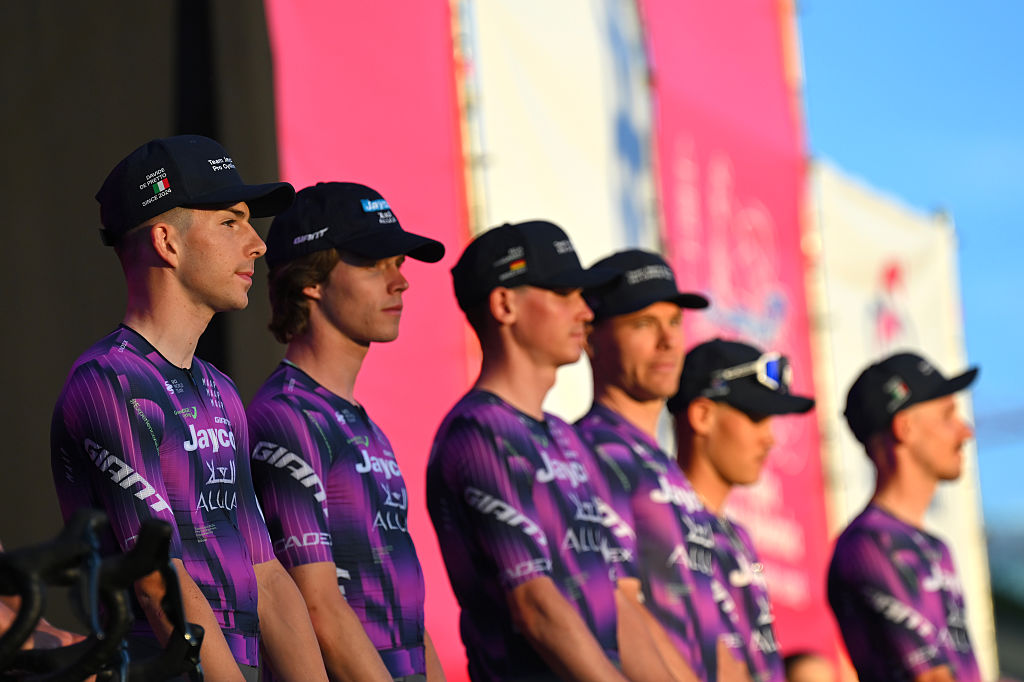Best gravel bike saddles: Comfortable and durable saddles for your off-road adventures
Choosing the best gravel bike saddle isn't just about comfort, you also need to consider the unique challenges of off-road riding.
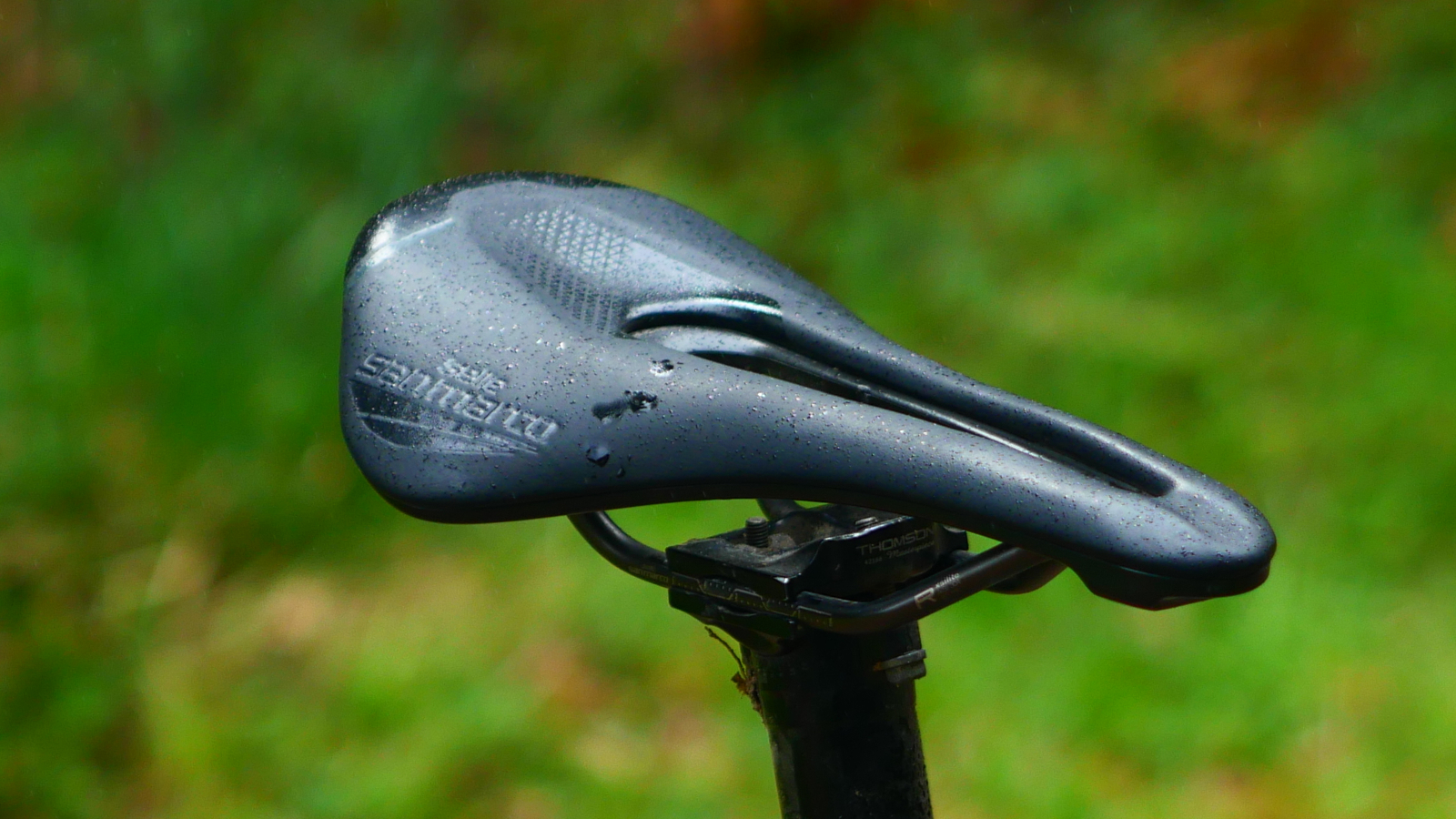
To many, the idea of a gravel bike saddle will sound like a marketing department that has jumped onto the gravel bandwagon in order to sell a solution to a problem that doesn't exist.
However, a saddle is one of the most personal things on a bike, and the right saddle for you will come down to a multitude of things, including bike fit and the type of riding you are doing, which is why the best gravel bike saddle will differ from the best road bike saddles.
It's important to continue your quest for the perfect saddle because you can have any of the best gravel bikes and wear the best cycling shorts available, but pair them with an ill-fitting saddle and your ride could be reduced to discomfort, pain, and worst of all, walking.
If you're the sort of person whose backside seems to agree with every saddle shape and size available, the best gravel saddles can offer something for you too. In the same way that neither your road wheels nor your mountain bike wheels are quite right for the job of gravel riding, the best gravel bike saddles are designed to offer that 'goldilocks' balance between weight, comfort, durability and comfort.
The needs of a road cyclist or a mountain biker differ from the needs of a gravel cyclist. Unlike a road bike saddle, mud, dirt, trees, traction, hard impacts and branches come into play for gravel saddles. A mountain bike saddle will be a better fit than a road saddle for gravel cyclists, but even these aren't perfect for the job. These can be heavier, built to withstand much harder impacts and incidents than a gravel cyclist is ever likely to need.
And even within the gravel cycling umbrella, there is a huge range of different types of riding. If you are a gravel racer your needs are going to be a lot different than that of a bikepacker. If you like to take on the most technical trails a drop-bar bike can handle, that warrants a different type of saddle again.
Whatever your needs there are some general ideas to consider, which we run through at the bottom of this page, but first, we've gathered our pick of the best gravel bike saddles to help you find something that will work for you.
Quick List
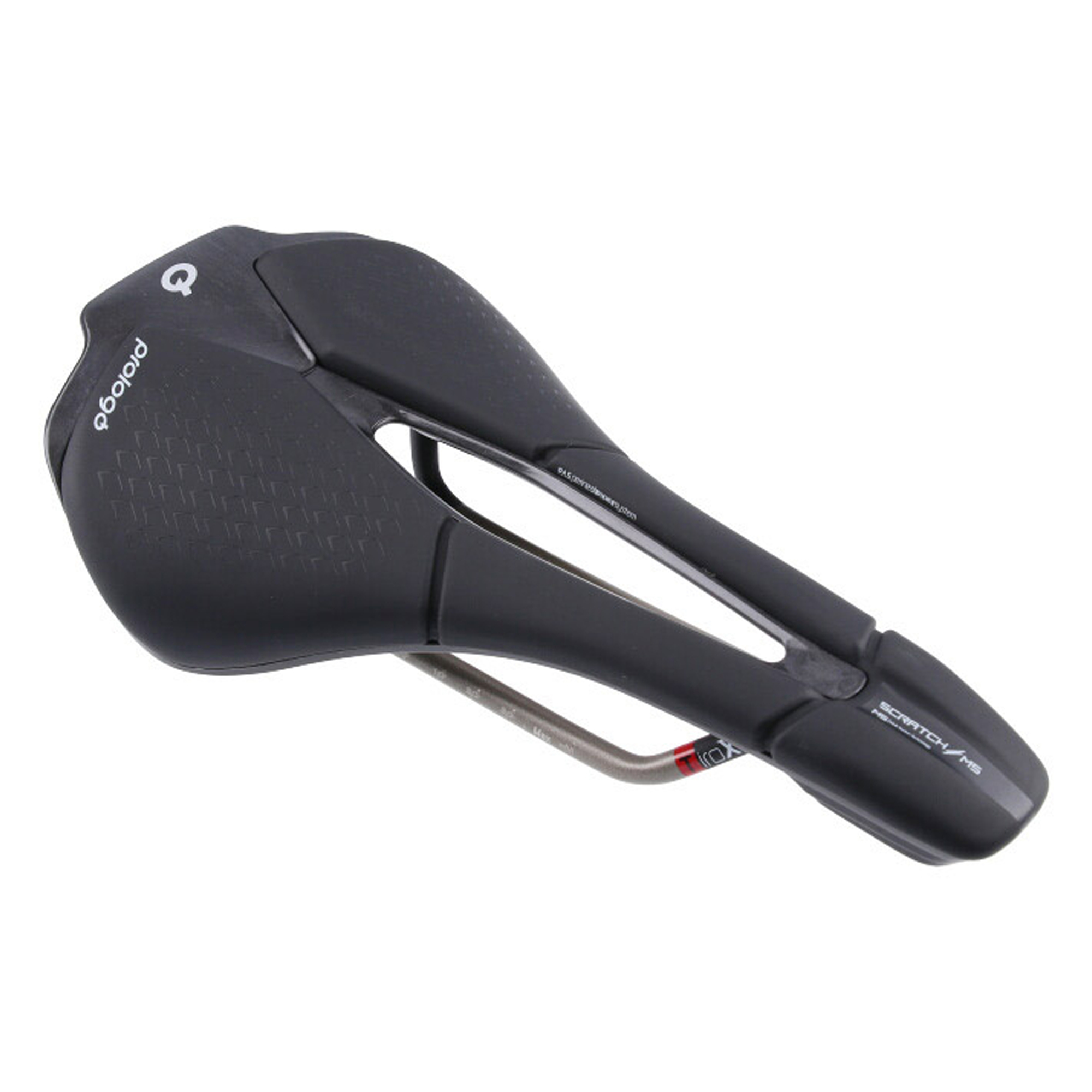
Comfortable shape and durable build make the Prologo Scratch M5 a versatile option for all off-road riding.
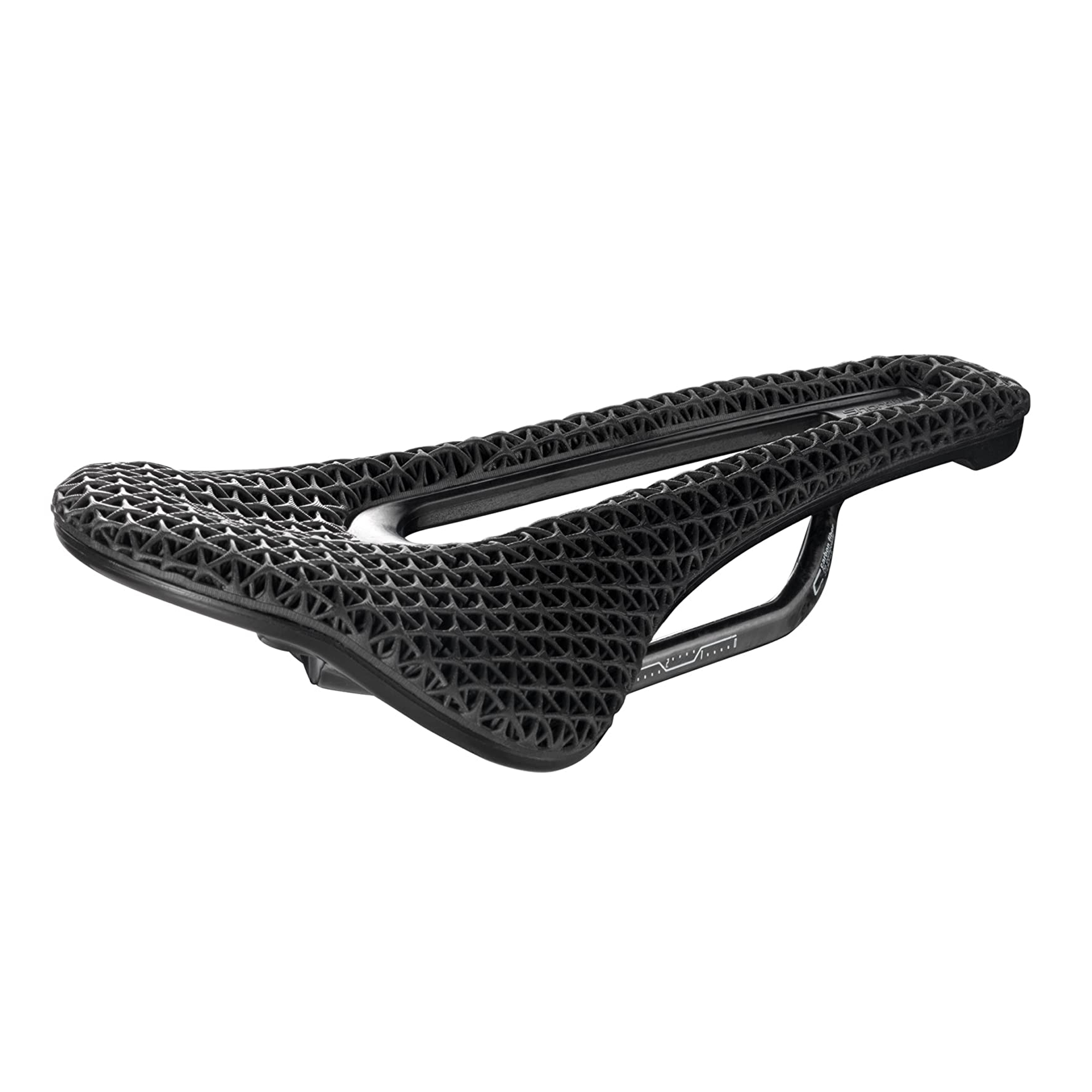
The locked-in position and advanced 3D-printed padding of the Shortfit 2.0 3D Racing blend performance and comfort.
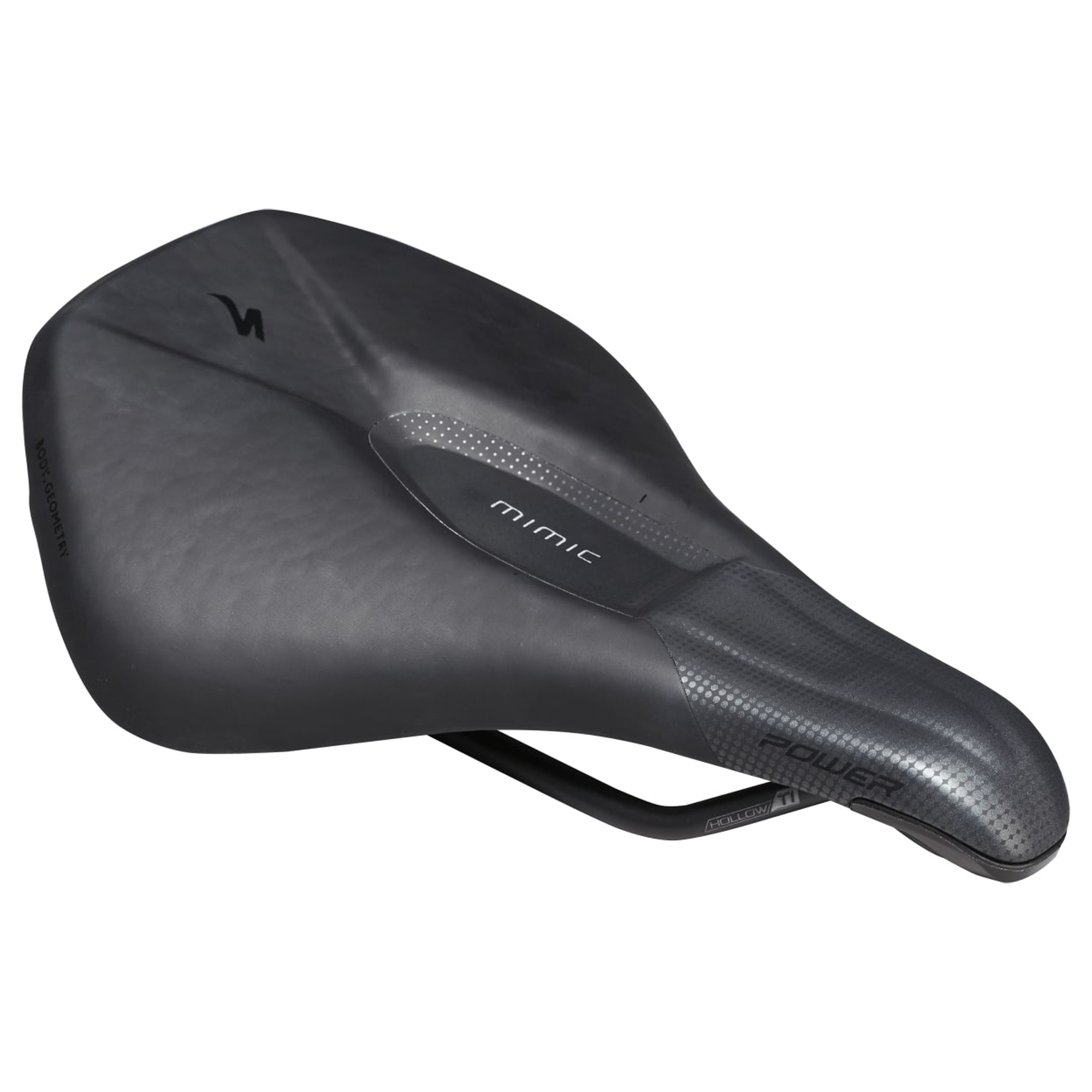
Specialized Power Pro Elaston Mimic Saddle has built a reputation for being an incredibly comfortable and supportive saddle.
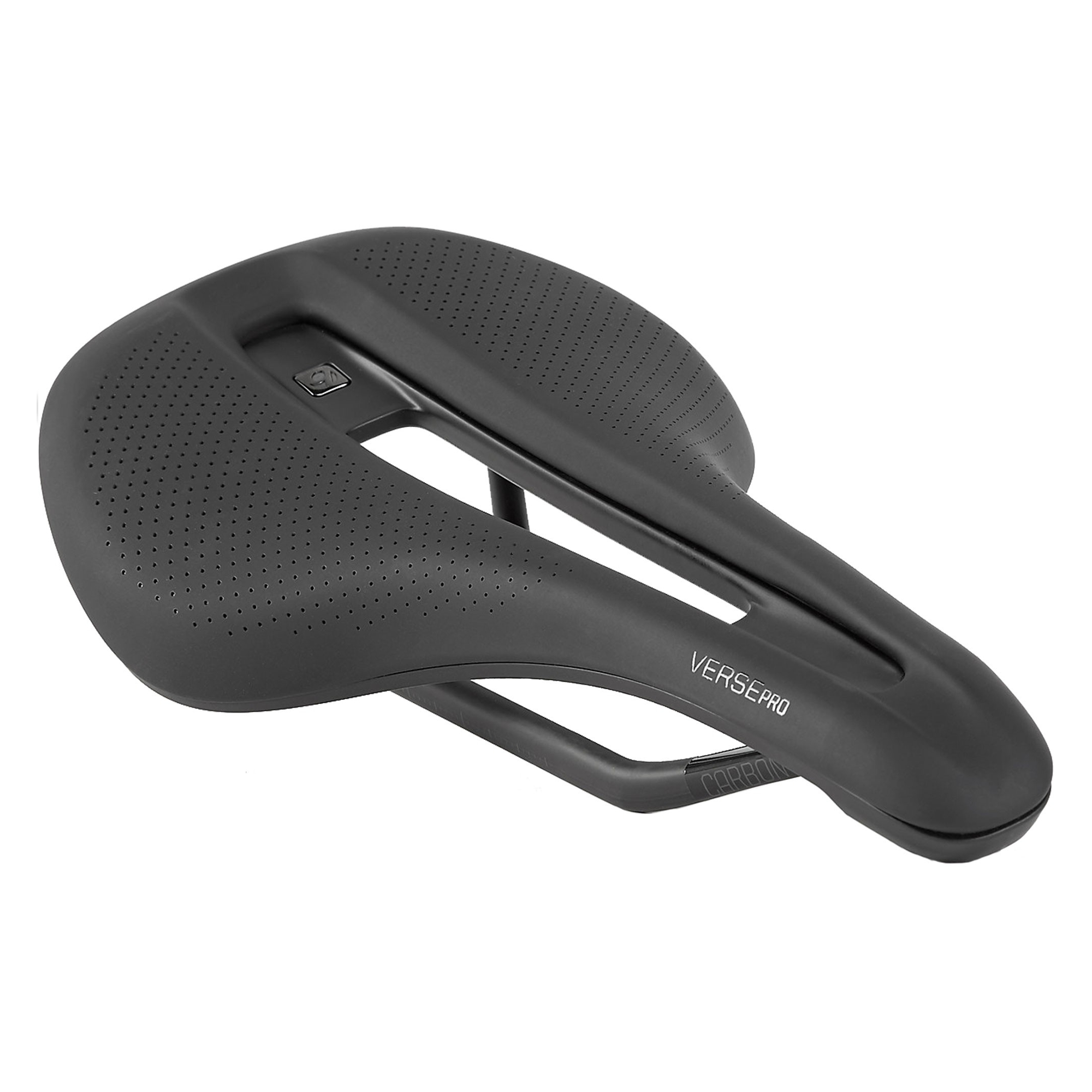
If you're specific about saddle widths, Bontrager has you covered by offering the Verse Pro in four sizes.
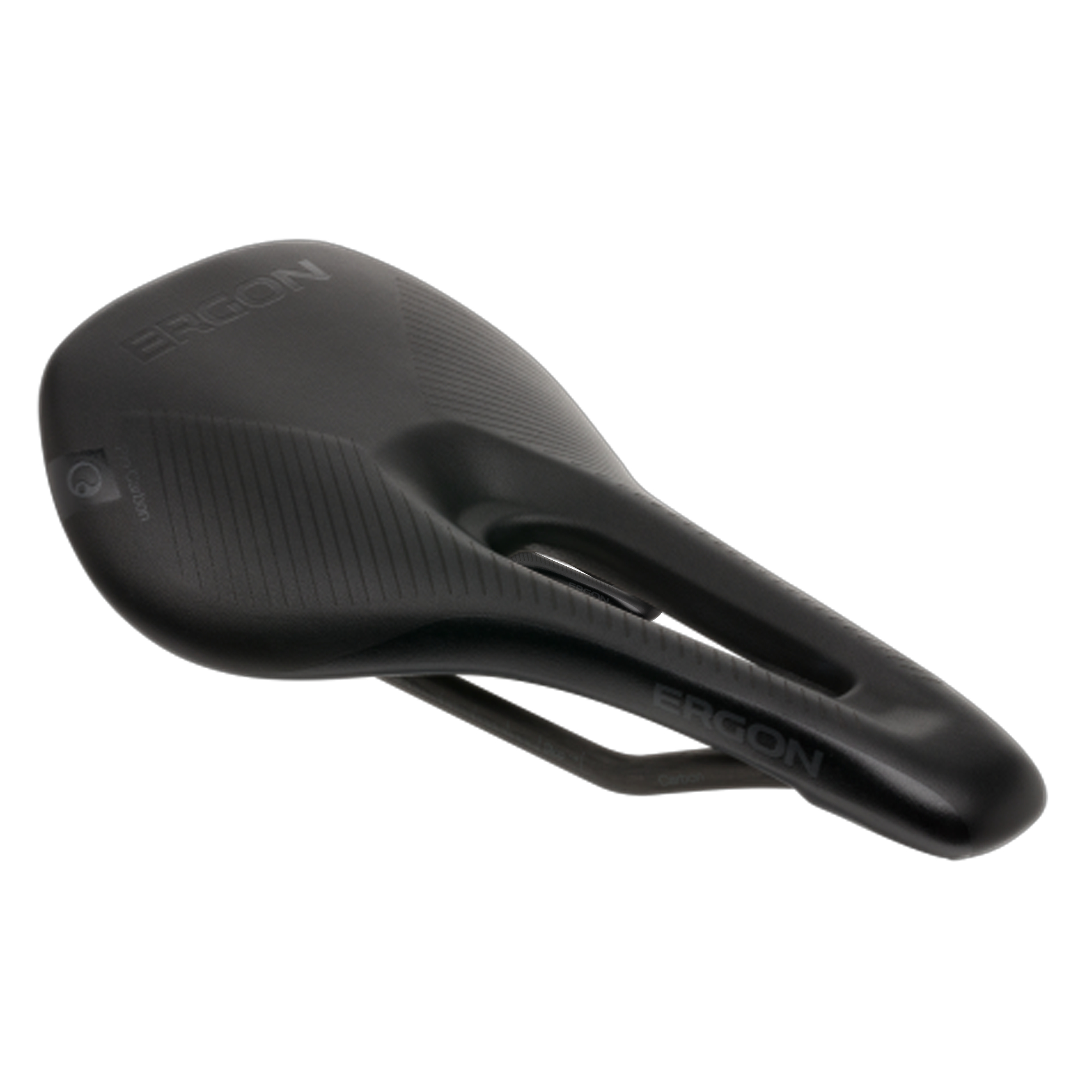
The Ergon SR Pro Carbon brings a carbon shell and carbon rails to a more affordable price point.
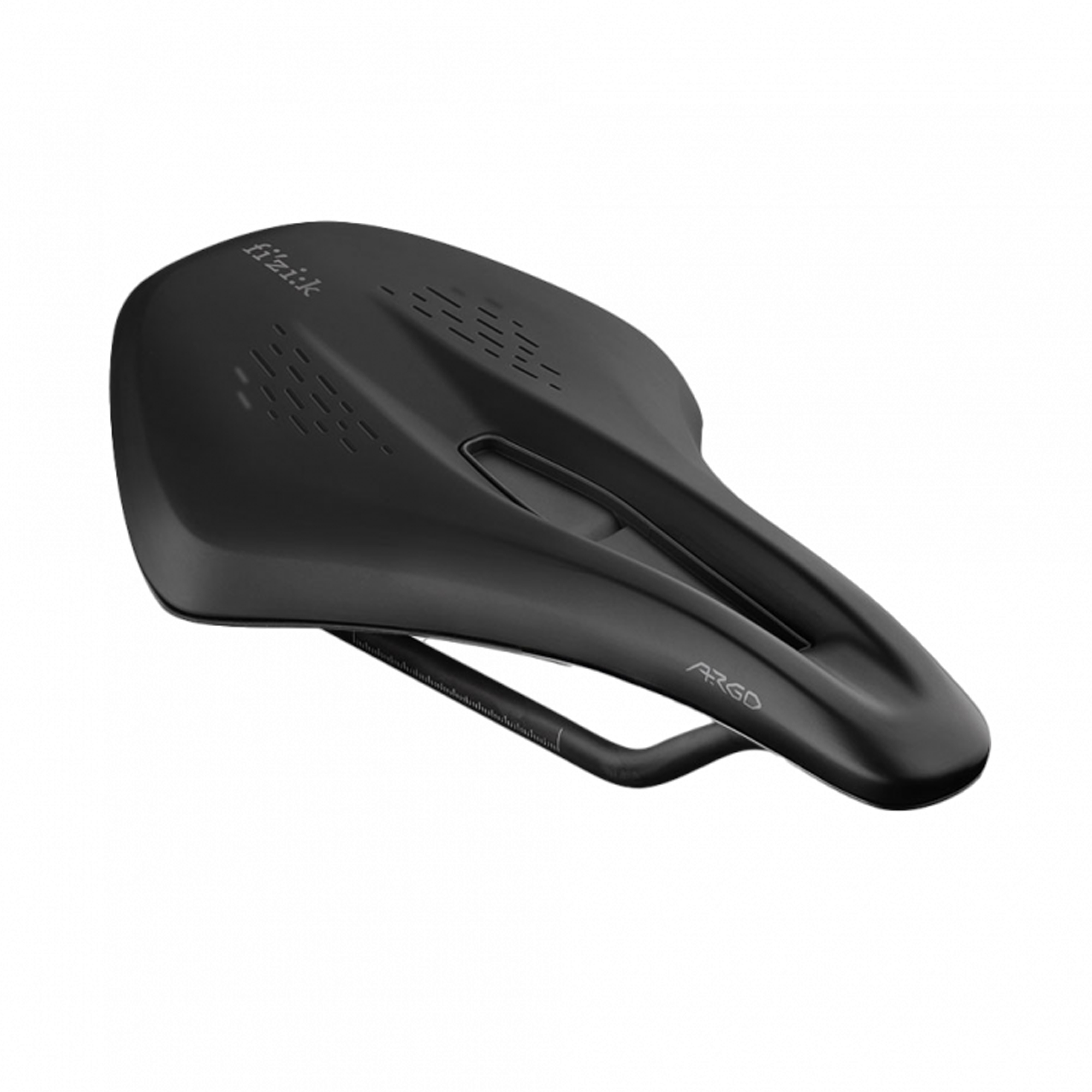
The Fizik Terra Argo X1 is available in wider sizes and features soft and supportive padding for longer adventures.
Best gravel bike saddle available today
You can trust Cyclingnews
Best gravel bike saddle
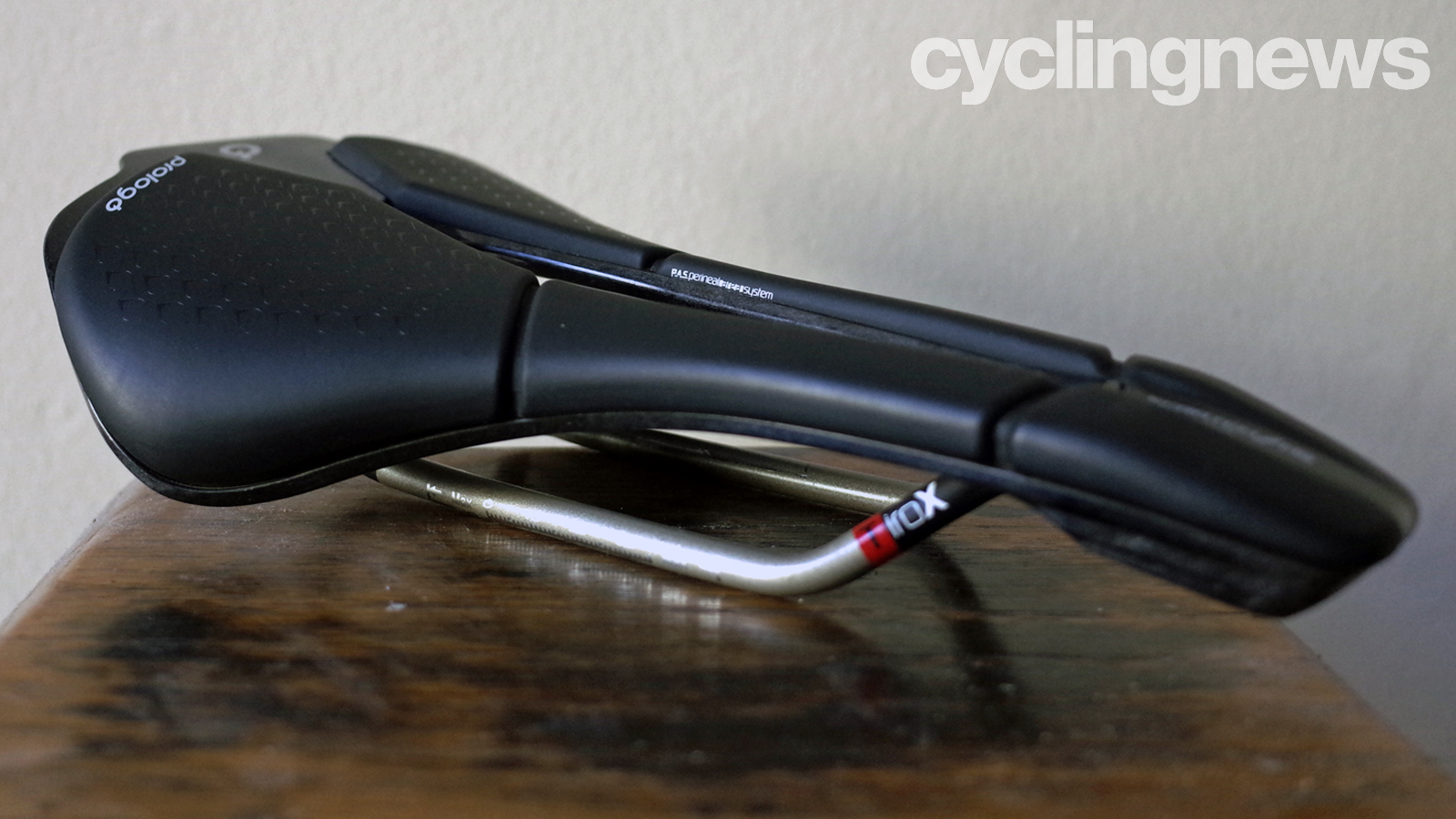
Specifications
Reasons to buy
Reasons to avoid
✅ You want comfort and versatility: The saddle's short nose shape and panelled design make it comfortable and suitable for various riding styles, from intense efforts to relaxed outings.
✅ You want durability: Despite extensive use over four years, the saddle shows minimal wear, making it a long-lasting option.
❌ You want limited sizing options: It’s only available in a single 140mm width, which may not suit all riders.
Prologo Scratch M5 PAS saddle is a versatile saddle that has found itself at home across many of my gravel bikes and has been used for all types of riding from sharp and pointy efforts to more relaxed leisurely days out.
Easy to set up, I found the short nose shape to be very comfortable and provide an efficient pedalling platform no matter your bike fit or position. The panelled design offers plenty of support and the rails absorb a decent amount of vibrations. Durability has also been impressive, showing little wear over the four years of use despite spending most of its time on my gravel and mountain bike.
Prologo offers several different iterations of the Scratch utilising different rail materials, padding and cut-out (PAS) or non-cut-out (Active Base). The only minor gripe is Prologo only offers a single 140mm width which may not suit everyone.
For more details, read the full Prologo Scratch M5 PAS saddle review.
Best performance
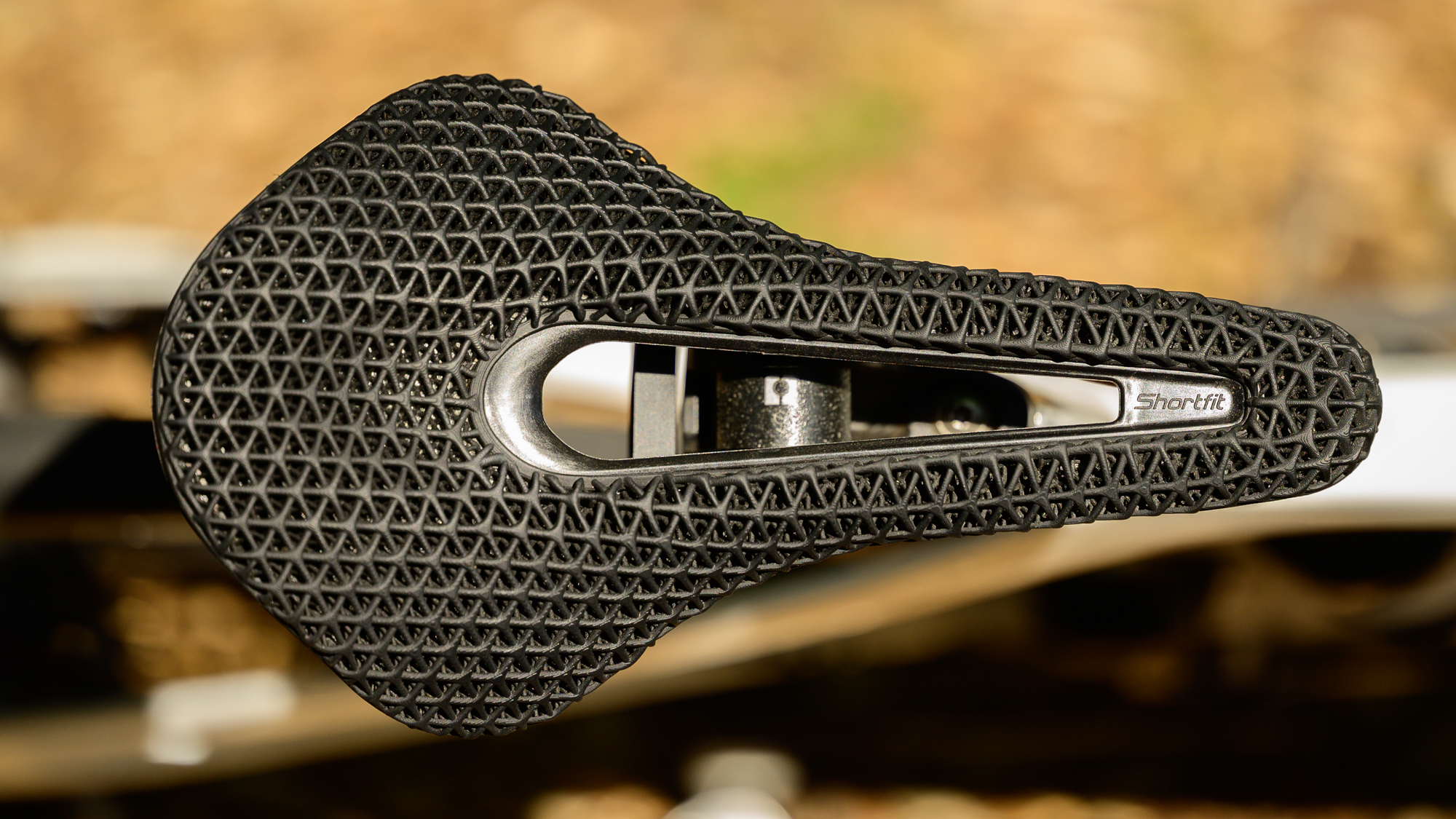
Specifications
Reasons to buy
Reasons to avoid
✅ You want smart comfort: The 3D-printed lattice structure offers precisely tuned padding that balances firm support and forgiving cushioning.
✅ You want performance positioning: The short, narrow shape with a rear kick and central cutout helps maintain optimal posture and reduces pressure.
❌ You want to pay the premium price tag: The price is high, especially considering the base version’s materials don’t match its futuristic design.
The Selle San Marco Shortfit 2.0 3D Racing saddle stands out with its futuristic 3D-printed design and excellent comfort. Its short, narrow shape with a noticeable rear kick helps lock you into the perfect riding position, while the central cutout does a great job relieving pressure. Thanks to the 3D lattice structure, the padding has been precisely tuned so it's firm where you need power transfer, and forgiving where it counts for comfort.
What really sets this saddle apart is how smart the cushioning is. Different zones provide targeted support, meaning whether you're hammering on the road or cruising gravel trails, it keeps you planted and comfortable. Even on longer rides, it holds up well without feeling too harsh.
The only real drawback? The price might make you pause, and the base materials (like the steel rails and nylon shell) don't totally match the high-end look of the 3D-printed top. Still, if you're willing to spring for the carbon rail version, you're getting a lighter, sleeker setup that feels much more premium. If you're serious about performance and comfort, this saddle is definitely worth considering.
For more details, read our full Selle San Marco Shortfit 2.0 3D Racing saddle review.
Best comfort
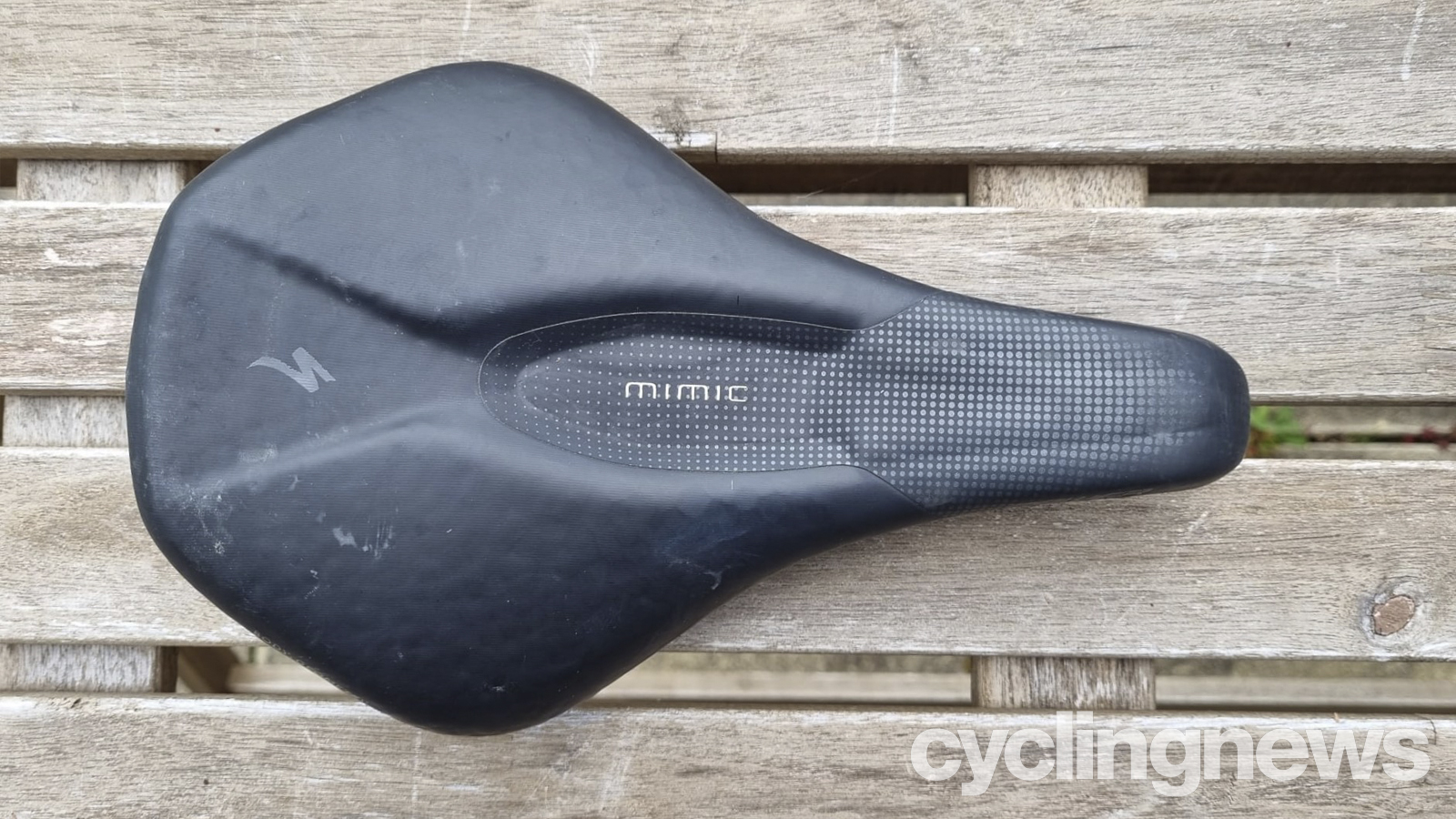
Specifications
Reasons to buy
Reasons to avoid
✅ You want comfort: The saddle uses soft padding and Mimic technology to support soft tissue and improve overall comfort for men and women, especially during long rides.
✅ You want a choice of different materials: Specialized offers the Power saddle in various different materials and price points
❌ You want a long saddle shape: If you prefer long-nosed saddles the Power shape might not suit you.
Specialized has released a multitude of saddle innovations over the years. The short-nose shape of the Power saddle, the grippy-yet-comfortable Elaston, the soft-tissue-supporting Mimic tech are just three, and they all feature here.
The Mimic variation of the Power saddle line-up replaces the cut-out with a depression, paired with a much softer padding at the front. For gravel riding, this kind of saddle is going to work best for riding that falls into the all-road umbrella as opposed to drop-bar mountain biking. Gravel races with long hours of hard riding, where aerodynamics matter, is an ideal use case.
Check out our Specialized Power Pro Elaston Mimic Saddle review for more information.
Best for size options
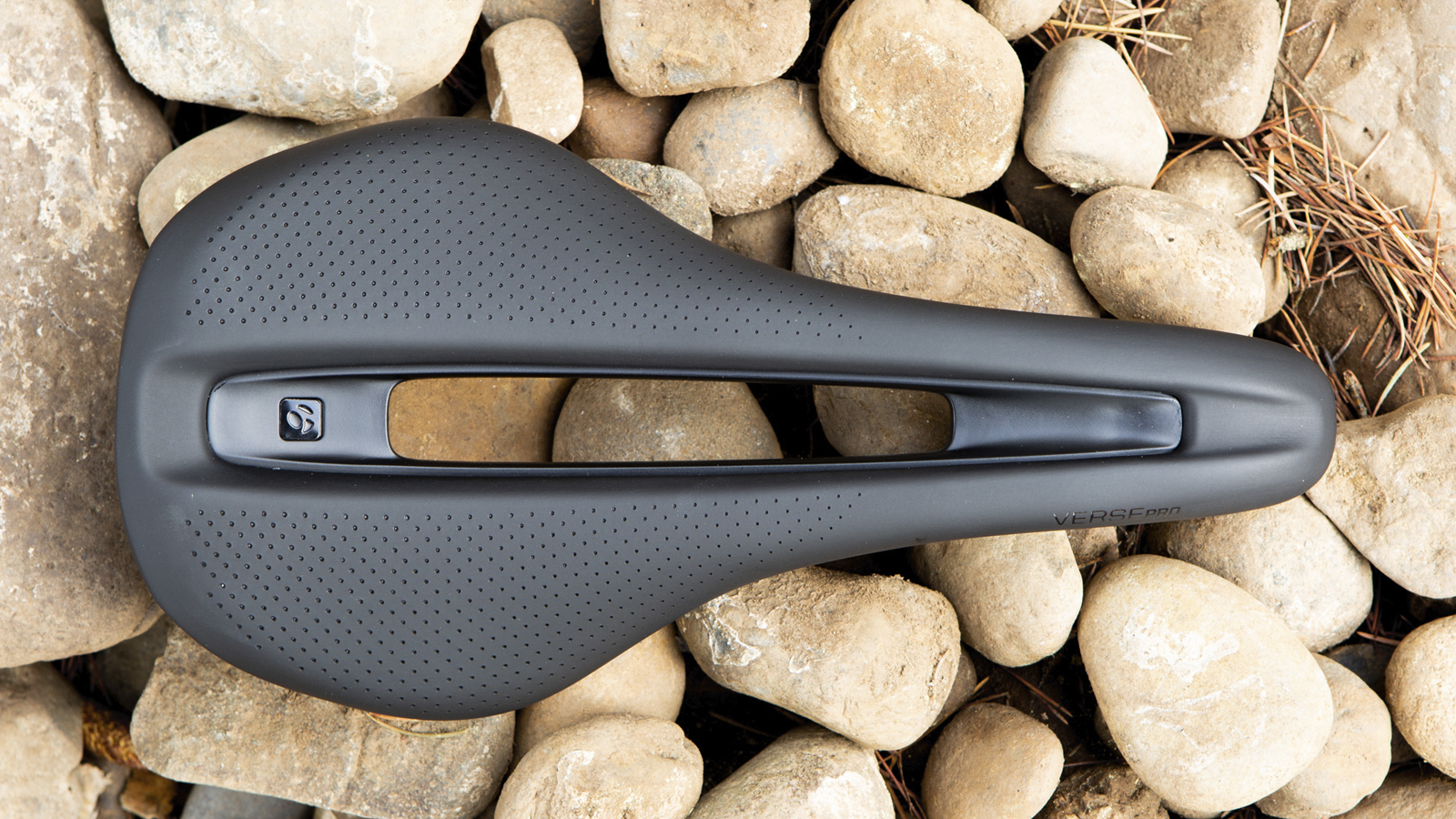
4. Bontrager Verse Pro
Specifications
Reasons to buy
Reasons to avoid
✅ You want size options and flexibility: With four sizes and an extra-long mount area, it caters to different body types and bike setups.
✅ You want accessory mounts: Bontrager integrates its Blendr accessory mounts on the rear of the saddle.
❌ You want a narrow centre section: The wide centre section won't suit everyone.
A saddle for everyone runs the risk of being a saddle for no one. The Verse line of saddles from Bontrager targets men and women and all surfaces and it works. Trek, and its accessory company Bontrager, is a company with a culture of data. An extensive dealer network helped Bontrager hone what was working for people.
Sales, returns, and fitment data from the dealer network showed the way forward. The most popular sizes and configurations of previous saddles have come together in a saddle designed for everyone. There's a wide nose paired with a wide midsection and a generous central cutout. To further broaden potential users the Bontrager Verse saddle has four sizes available and an extra-long usable mount area on the rails.
Best value
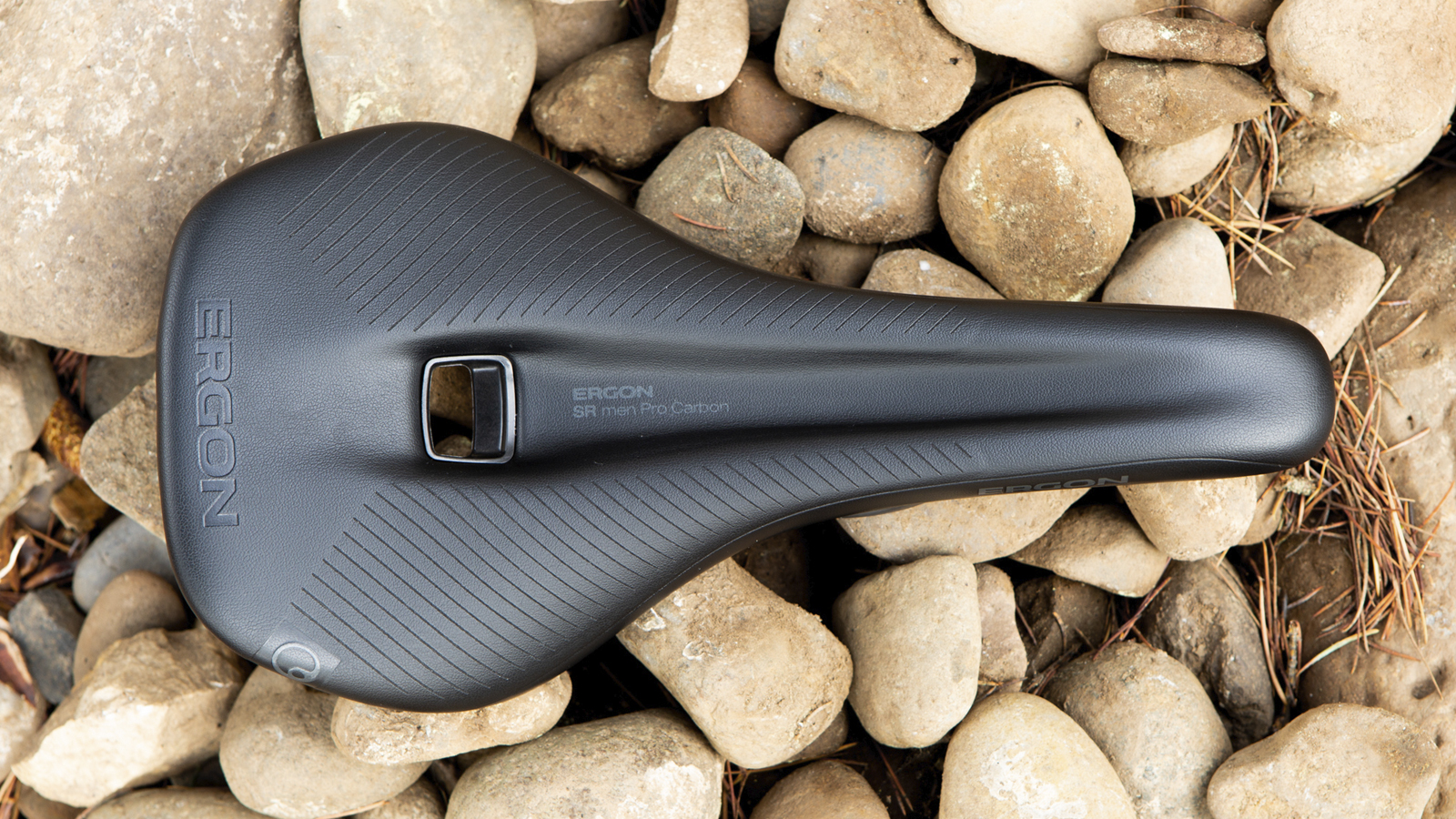
5. Ergon SR Pro Carbon
Specifications
Reasons to buy
Reasons to avoid
✅ You want premium materials at a great value: The Ergon SR Pro Carbon offers top-tier carbon materials at a competitive price, which is excellent for a lightweight, high-performance saddle.
✅ You want a design tailored for aggressive riding: Its shallow, rearward-biased relief channel supports male pelvic tilt while maintaining saddle strength and structure.
❌ You want limited water drainage: The small drainage spot may not be ideal in wet conditions, potentially affecting comfort or cleanliness.
The SR Pro Carbon uses a design targeted at men who ride in an aggressive position. Most companies who use a relief channel use a deep channel that splits the shell from the nose to the rear of the saddle. With the Ergon SR Pro, the channel is shallow with a rearward bias. Ergon claims this better reflects male pelvis tilt but it also maintains the integrity of the saddle. With only a small spot for water to drain the saddle is stronger and mud and dirt don't have a way to get through from below.
A carbon composite shell and carbon rails can make for an expensive saddle. The Ergon SR Pro Carbon is a rare offering at just over $100 for top-of-the-line materials and low weight.
Best for wider widths
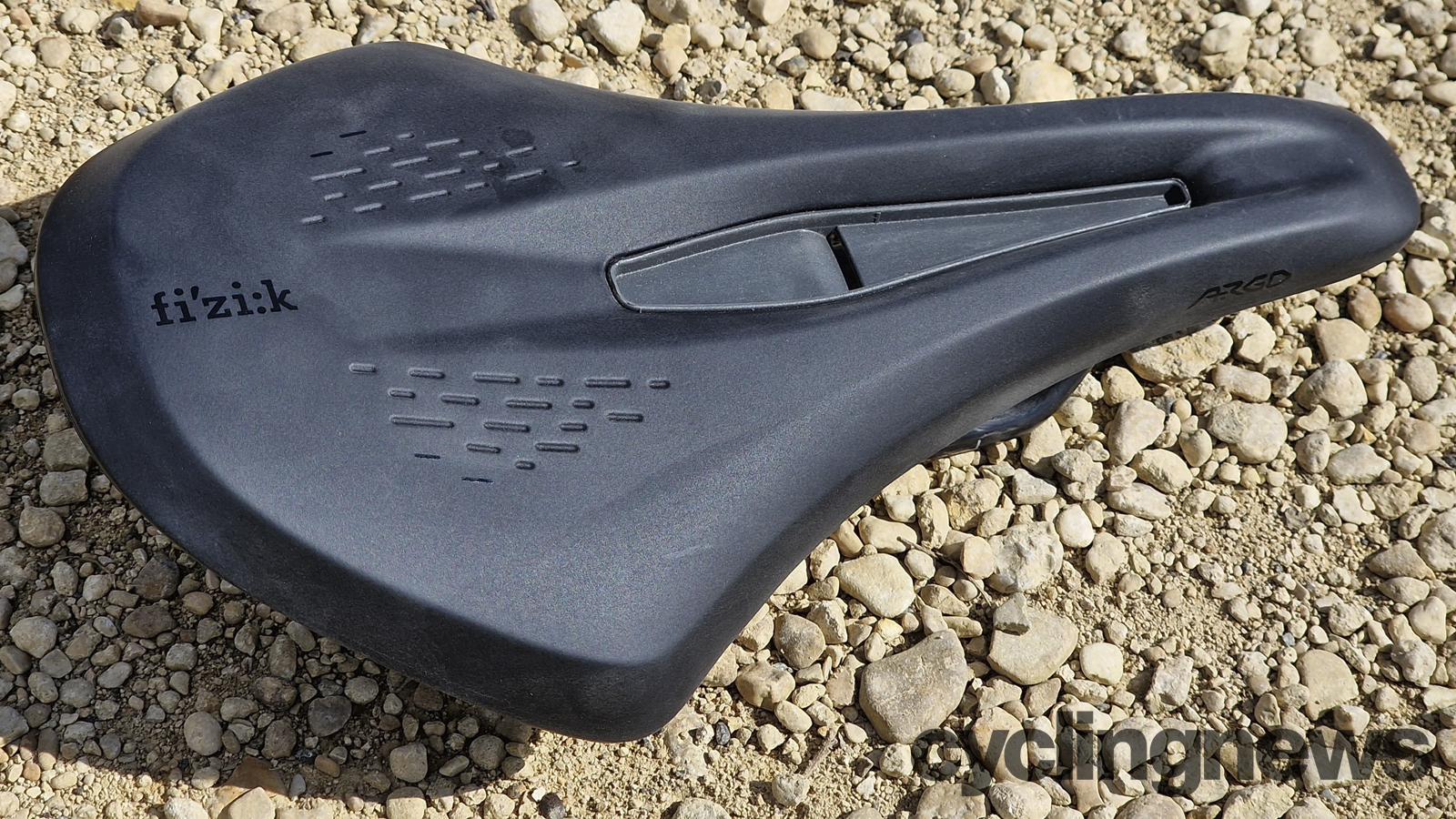
Specifications
Reasons to buy
Reasons to avoid
✅ You want comfort on long rides: The added padding makes this saddle ideal for endurance and adventure cycling.
✅ You want off-road stability: The shape and cut-out design help keep you planted on loose surfaces and provide control on steep climbs.
❌ You want extra weight: Riders focused on performance may find the saddle too padded and heavy.
When it comes to saddles there are few brands with the name recognition of Fizik. Like most brands though, it has made a real push to meet the needs of modern drop bar riders who are looking to push beyond paved roads.
With the Terra Argo X3, Fizik understands that the requirements of traction on loose surfaces call for a more planted stance. There's a centre cut out and it's a short nose design that's 5mm longer than the short nose design of the road version. The shape ensures you're planted but keeps the saddle out of your way when you need to descend. On steep climbs when you need the nose for control there's just enough purchase available.
The saddle has a bit more padding which works really well if you are planning a long adventure, however, those looking for performance will likely prefer a more svelte saddle shape and weight.
For more details, head over to our Fizik Terra Argo X1 review.
Also consider
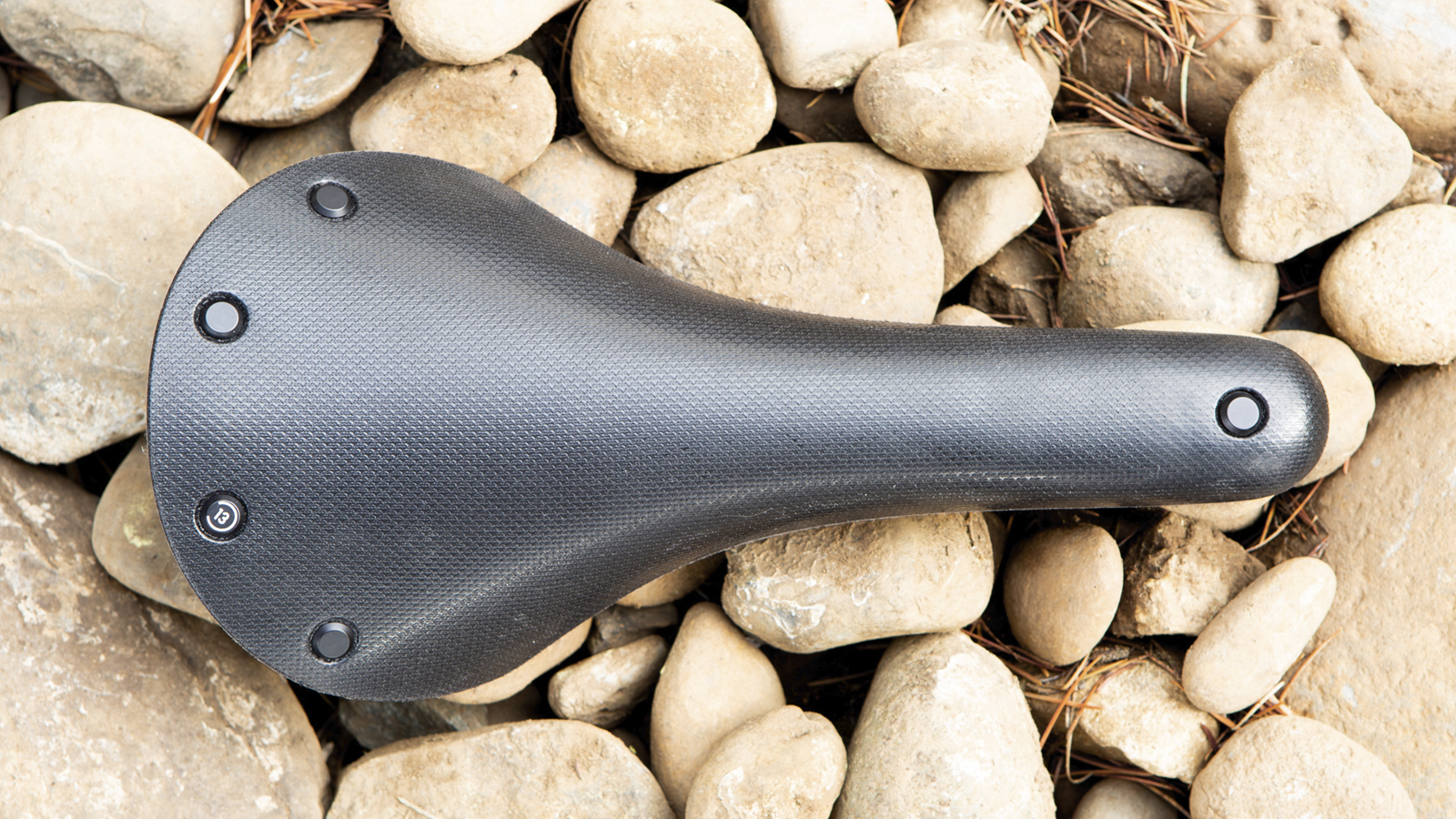
7. Brooks Cambium C13 Saddle
Specifications
Reasons to buy
Reasons to avoid
✅ You want durability: The Cambium C13 is built with a carbon fibre frame and thick rubber, making it extremely durable.
✅ You want low-maintenance comfort: Its unique rubber construction provides natural shock absorption without traditional padding.
❌ You don't want a traditional feel: The non-padded rubber design may not suit everyone's bike.
There's a certain mystique about Brooks saddles. It's just one of those brands that seem to show up on the bikes of the coolest people. Unfortunately, the traditional leather construction of Brooks saddles isn't suited to off-road riding. The Cambium C13 is an answer to that need.
The construction of the Brook Cambium C13 is different from most of what's out there. Instead of a shell with padding and a cover, there's a carbon fibre frame covered with a thick piece of rubber. The unsupported nature of the rubber provides all the necessary shock absorption with more durability.
The Cambium C13 is so durable we can't imagine it ever wearing out, even after a crash.
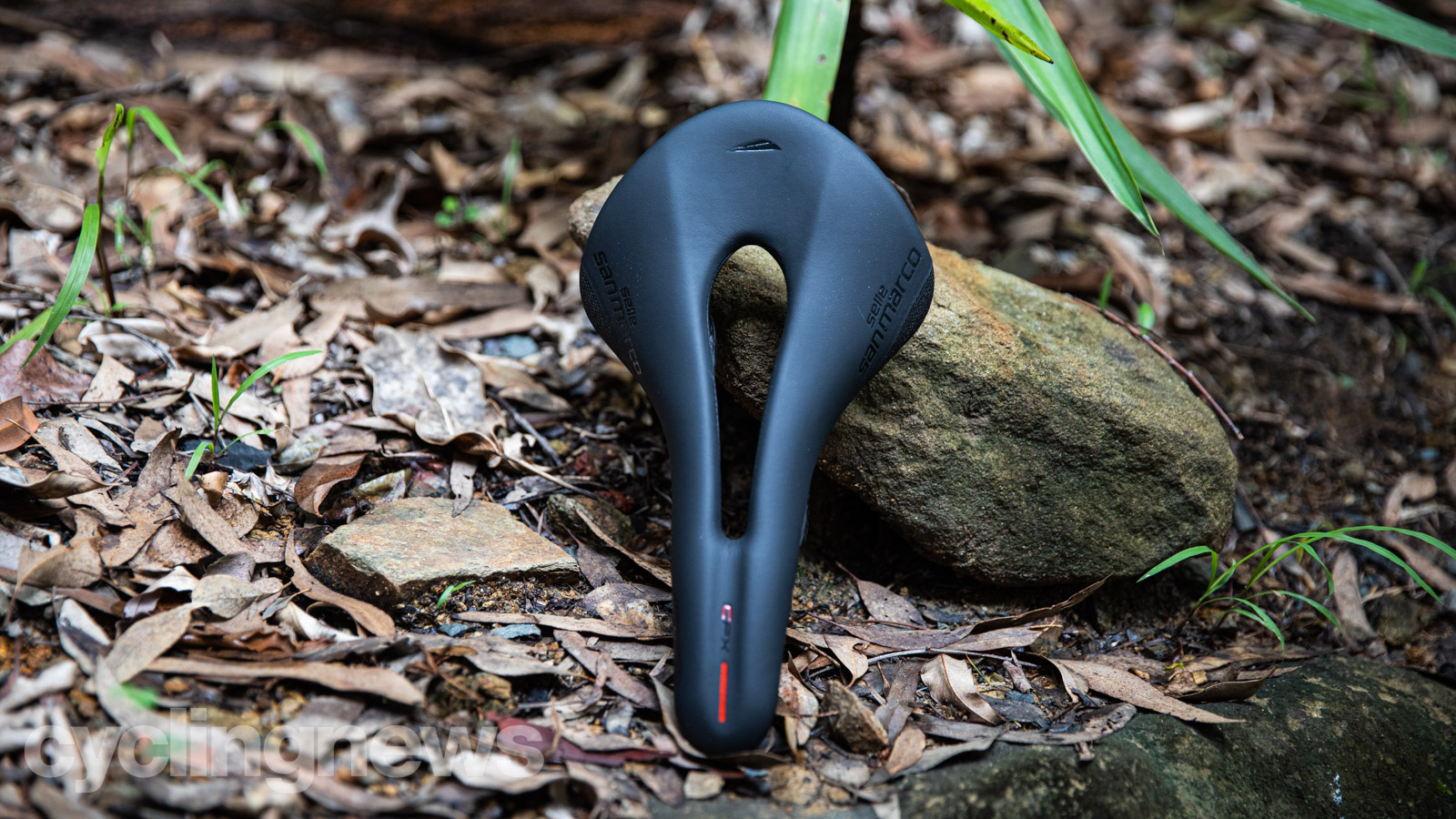
Specifications
Reasons to buy
Reasons to avoid
✅ You want comfort on rough roads: The combination of carbon rails, a waved profile, and medium padding provides excellent shock absorption and support for long gravel rides.
✅ You want durability: Reinforced Cordura edges withstand falls well, making the saddle tough enough for demanding conditions.
❌ You want sizing limitations: The saddle is only available in one width (146mm), which may not suit riders with very narrow or wide sit bones.
Selle San Marco's AllRoad Carbon FX saddle is better suited to those whose gravel rides are more 'all-road' than drop-bar mountain biking. It's lightweight at 160g, and comes with a waved profile to provide a locked-in feel. There's a wide cut-out, medium padding and a carbon-reinforced nylon shell paired with carbon fibre rails. That all combines to create a saddle that's good at taking the sting out of the rougher roads, without causing undue soft-tissue damage.
San Marco has also given this saddle reinforced Cordura edges which shrugged off all of our untimely falls during testing. It's only available in one size: 146mm wide, which means if you have particularly narrow or wide sit bones, then this won't be for you, but for those it will fit, the AllRoad Carbon FX saddle is a great option.
Read our review of the Selle San Marco AllRoad Open Fit CFX to find out more.
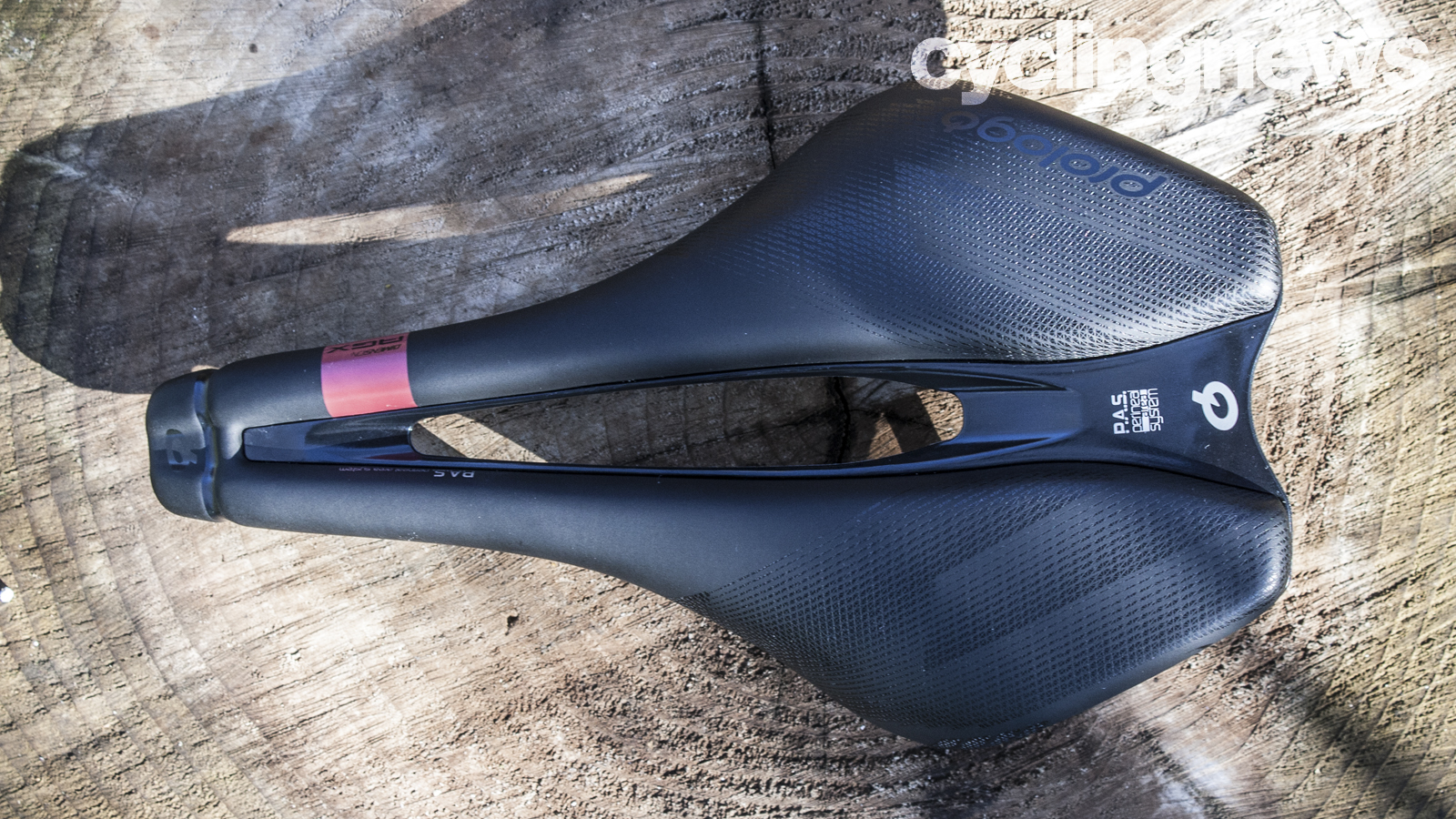
Specifications
Reasons to buy
Reasons to avoid
✅ You want comfort: The saddle features 10mm-thick, tuned padding designed specifically to absorb high-frequency vibrations on gravel roads.
❌ You want performance compromise: While not heavy, its design prioritizes comfort over outright performance.
Weighing in at 209g the Prologo Dimension AGX is not what you would call heavy but the concept hinges more on comfort than outright performance. As a dedicated gravel saddle, the Dimension AGX is all about comfort and the Italian company has made a concerted effort to improve foam density by tuning the padding structure which is 10mm thick - all of which help negate high-frequency gravel-road vibrations.
As a visual package, the Prologo Dimension AGX gravel saddle looks rather refined and should complement your bike's aesthetic pretty easily. The only thing missing from the recipe, however, is the paucity of saddlebag integration which has almost become a prerequisite on rival gravel-specific perches from Fizik.
For more information, check out our Prologo Dimension AGX gravel saddle first-look review.

10. Selle San Marco Shortfit 2.0 Racing
Specifications
Reasons to buy
Reasons to avoid
✅ You want efficient pedalling and comfort: The waved short-nose design promotes an effective and comfortable riding position.
✅ You want pressure relief: The large cut-out helps reduce pressure and maintains good blood flow during rides.
❌ You want to miss out on premium cushioning: It lacks the advanced 3D cushioning of the higher-end model.
We have already featured a Selle San Marco Shortfit saddle however the premium price point of the 3D technology is probably more than most can justify. Luckily Selle San Marco has more affordable options with traditional padding like the Shortfit 2.0 Racing.
It shares the same waved short nose fit as Selle San Marco Shortfit 2.0 3D Racing which we found promoted an efficient and comfortable pedaling position. I found the large cut-out did a good job of relieving pressure and ensuring good blood flow.
Although you don't get the fancy 3D cushioning, the padding is still effective and, along with the Xsilite stainless steel hollow rails, does a decent job of filtering out chatter and vibration from gravel.
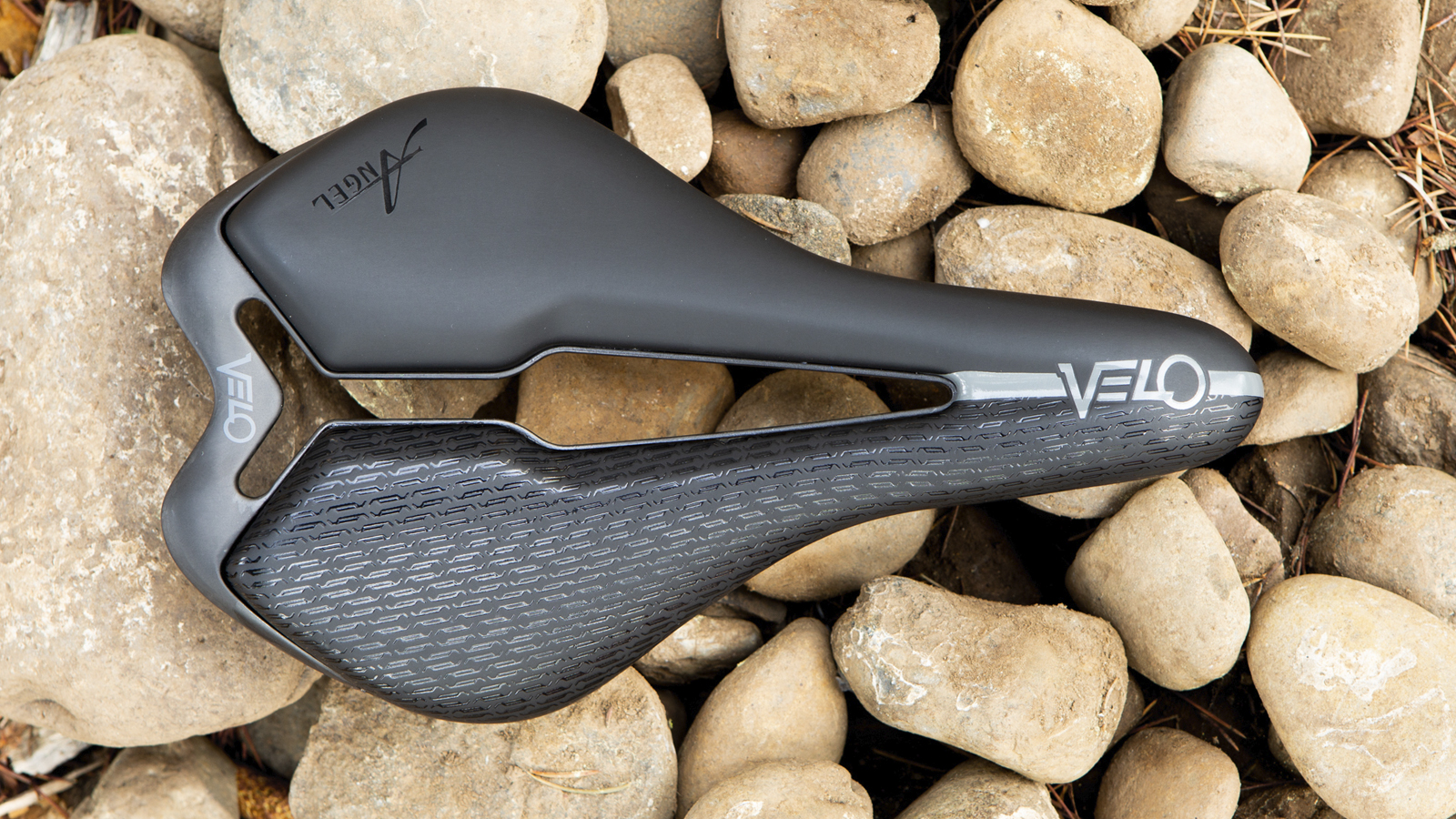
11. Velo Angel TT
Specifications
Reasons to buy
Reasons to avoid
✅ You want high-performance design features: The Angel series offers stiff padding and a Y-shaped cut-out that allows flexibility with your hips, enhancing comfort and performance.
❌ You want better availability: Despite being the largest manufacturer, Velo Saddles were almost impossible to purchase until recently, which may have limited access to their products.
Velo Saddles is the manufacturer behind many of the saddles from other brands on the market. It produces over 15 million saddles a year and is the largest manufacturer of bike saddles in the world. Despite that, until recently, they were almost unheard of and actually purchasing one was near impossible. New distribution avenues hope to change all that and if you haven't taken a look now is a good time.
The Angel series of saddles is the highest performance saddles that Velo offers. The Angel TT starts with the Velo Angel Glide and shortens it. The two saddles are exactly the same, except that the Angel TT is wider and shorter. That means the same stiff padding and the same Y shaped cut-out that lets the shell flex with your hips.
How to choose the best gravel bike saddle
Do I need a new saddle at all?
Most people assume that because they have pain in the saddle area, they need a new saddle. Many experienced cyclists have been through a lot of saddles and have built a kind of religion around what works for them. Be careful though, it's easy to fall into a correlation without causation hole of never-ending saddle purchases. Just because a particular saddle worked at a particular time does not necessarily mean that it is the only saddle that will ever work. By the same token, when you have pain in your saddle area that doesn't always mean the saddle is the issue.
Kevin Schmidt, the owner of Pedal PT, and an expert in bike fit has three primary considerations for saddle fitment. The most important attribute when purchasing a saddle is the width. You can't change the width of a saddle after the fact so make sure you have an understanding of the width of your sit bones and choose a saddle to match. Once you've got the saddle, make sure it's level. That doesn't always mean level with a bubble level. Instead, it means level in a way that keeps you feeling stable and not sliding forward or backwards when pedalling.
The last point Kevin brings up is height. Saddle height is a part of the bike fit not typically considered for saddle choice but an incorrect height can cause unexpected saddle pain. For example, if your saddle is too high it can cause you to rock slightly as you reach for the bottom of the pedal stroke. This rocking can cause chafing even though you might have a perfect saddle.
Do I need a curved or a flat saddle?
Another point of considerable discussion in the saddle world is flat vs waved/curved. Most brands have recommendations for one or the other based on pelvis tilt. Instead of thinking about pelvis tilt consider how much you like to move around on your saddle.
If you like to move around a lot on your saddle then a flat saddle is the way to go. If you want a more locked-in feeling then a waved profile, as viewed from the side, will help keep you in a single position. There's not really a right or wrong choice here unless it's an aspirational one.
If you like to move around a lot, don't buy a waved saddle because you think you shouldn't move around. The waved saddle might keep you more locked in sometimes but it's likely you'll still move around. As you move around with a waved saddle your fit will change. Move forward onto the central peak and you've effectively raised your saddle height.
How to buy a gravel-specific saddle?
Although a discussion about saddles applies somewhat to all bikes this is a discussion specific to gravel cycling, so here are some considerations that are unique to that discipline. Of course, 'gravel cycling' covers a broad spectrum. Depending on how race vs adventure and all-road vs off-road your gravel cycling is, some features will be more, or less, important to you.
Many gravel bikes use a more relaxed endurance position that makes the rider more upright. As you sit upright your pelvis widens out and the necessary saddle width will change. Make sure you keep an eye on your position when measuring your sit bones.
Compared to a road bike, gravel cycling might have you moving around on your saddle more. Traction and balance are much more of an issue on uneven dirt, mud, and gravel. Seasoned mountain bikers have experience shifting to the rear of a saddle, or the nose, as terrain requires it. It's one reason mountain bike saddles are a popular choice for gravel cyclists and it might have you choosing a different saddle for a gravel bike.
Along with moving around on the bike for traction, you might find yourself staying seated more often. On a road bike, a steep gradient will often have the rider up and out of the saddle which also gives a break from the sitting position, but it's not always possible on loose terrain. When you need to keep your weight over the rear wheel to hold traction on a steep hill you can't stand to climb. That means more time planted on your saddle, and more need for a comfortable, shock-absorbing one.
How we test?
Testing is the backbone of the tech department at Cyclingnews and how we test is taken seriously, so read on to find out more.
Saddles are a very personal item, a saddle might be the peak of comfort for one person yet someone else may have an entirely different experience. Luckily, the Cyclingnews team has reviewed and ridden saddles from every manufacturer so while we can't guarantee a saddle will be comfortable for you, we can offer a recommendation on what saddle may suit you based on your preferences and our real-world experience.
Testing saddles involves time in the saddle, whether it's long or short rides and over a variety of different terrains. Bike fit also plays a massive role in saddle comfort so all saddles are used across a variety of different bikes to determine how they perform.
The latest race content, interviews, features, reviews and expert buying guides, direct to your inbox!
Josh hails from the Pacific Northwest of the United States but would prefer riding through the desert than the rain. He will happily talk for hours about the minutiae of cycling tech but also has an understanding that most people just want things to work. He is a road cyclist at heart and doesn't care much if those roads are paved, dirt, or digital. Although he rarely races, if you ask him to ride from sunrise to sunset the answer will be yes.
Height: 5'9"
Weight: 140 lb.
Rides: Salsa Warbird, Cannondale CAAD9, Enve Melee, Look 795 Blade RS, Priority Continuum Onyx

